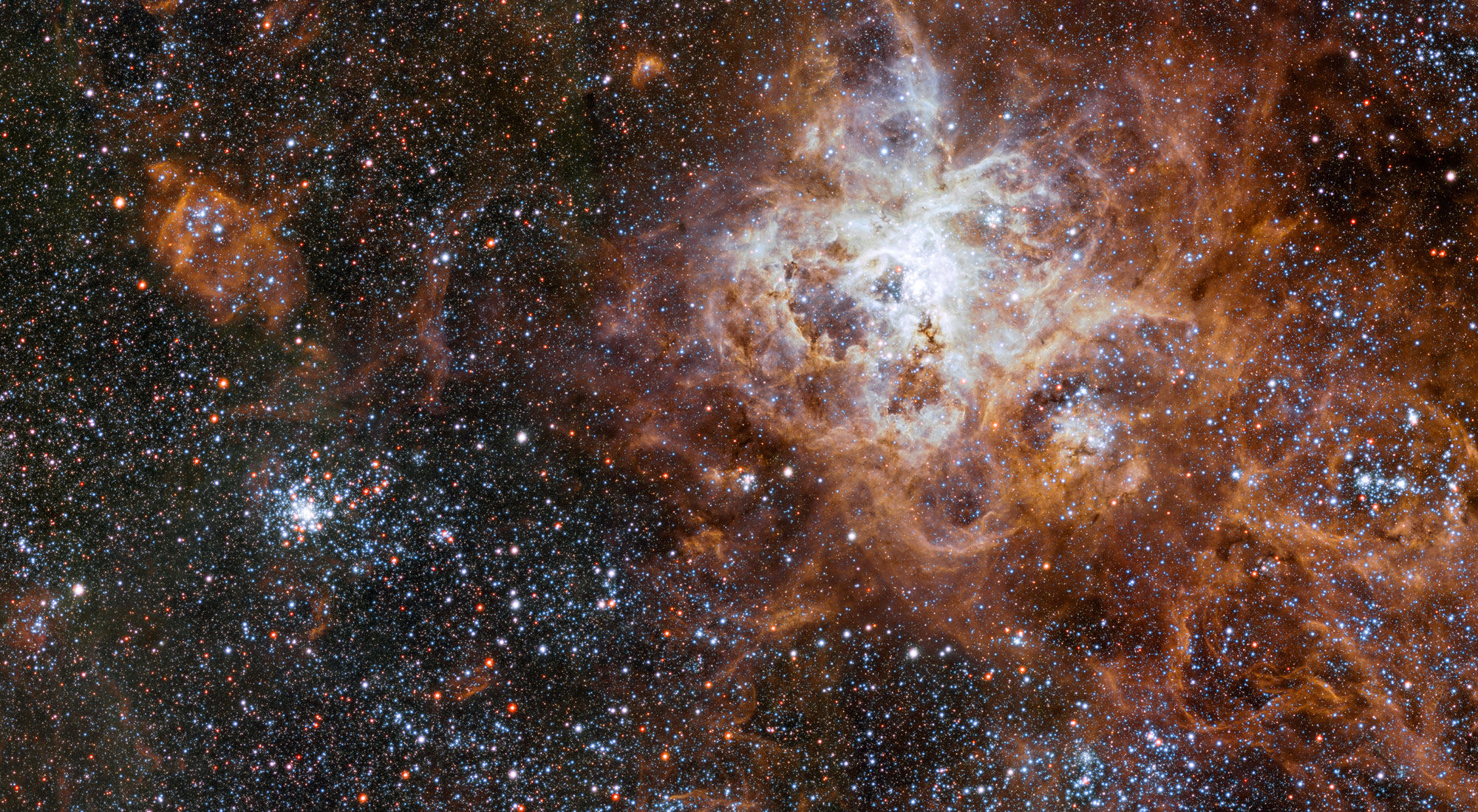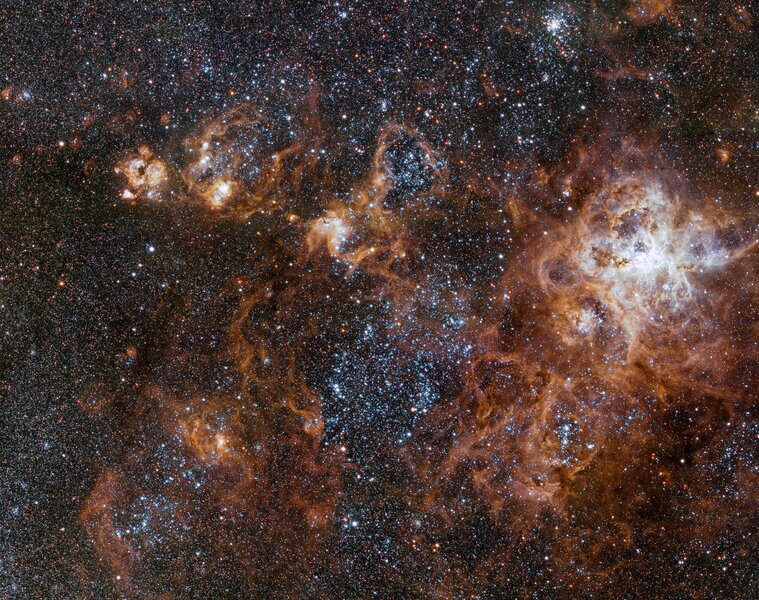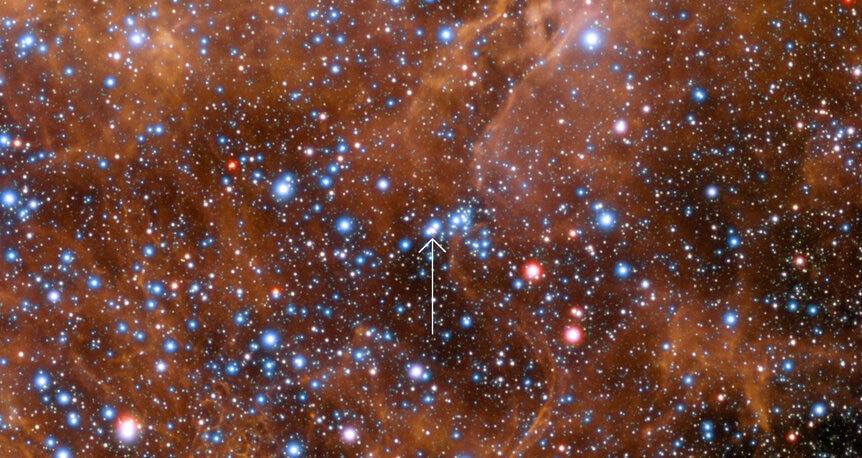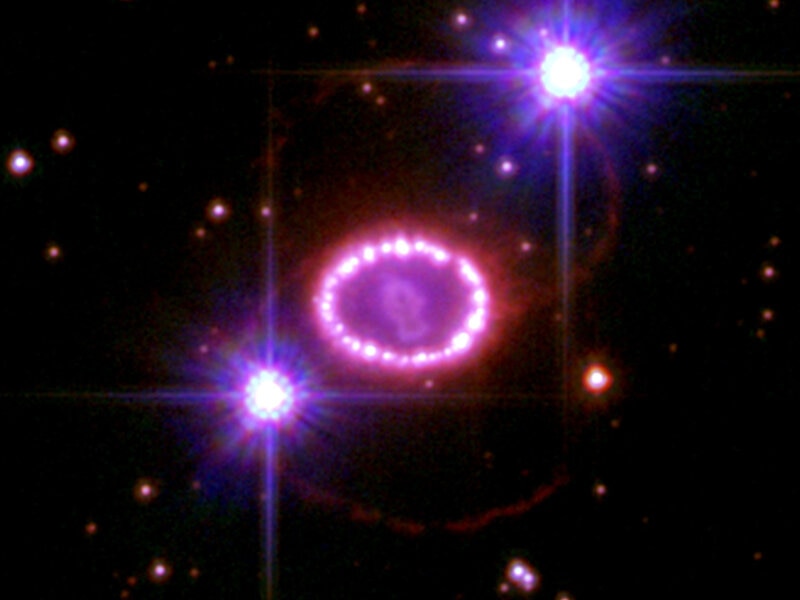Create a free profile to get unlimited access to exclusive videos, sweepstakes, and more!
Revisiting the Tarantula Nebula to find an old friend

So every now and again I go through old emails looking for news items I might’ve missed that would make good blog posts (or newsletter items). It’s impossible to keep up with everything, and sometimes something will slip past me that would still make a fun post, even weeks (or months!) after the initial announcement.
I was poking around my inbox and found a press release from the European Southern Observatory about a phenomenal image of the Tarantula Nebula, a vast (and I mean vast) star-forming complex in the Large Magellanic Cloud (LMC), a small companion galaxy to the Milky Way. The image is ridiculously huge; the full-res shot is a staggering 16,655 × 16,719 pixels and weighs in at 150 megabytes!
I downloaded it and opened it in a viewer, and, despite the overwhelmingly rich and confusing and densely populated field — it’s just lousy with gas and stars and clusters everywhere — I had a sudden urge to look for an old friend amidst the chaos.
It took me a minute, and I had to confirm it by looking up a different image of it to make sure, but I found it: the site of Supernova 1987A.
As I looked at the big image, something nagged at me. Suddenly I froze, then mentally kicked myself: I realized I already wrote about this Tarantula Nebula image back when it came out! But then I checked out that article and laughed. For reasons I’ll never know now that it’s months later, at the time I didn’t even think to look around the nebula for SN87A*.
WHAT? I spent a lot of time — a lot — in graduate school and for a couple of years after staring at that frakkin’ supernova, studying the rings of gas around it, the stars nearby, the context of the progenitor (the star that exploded, called Sanduleak -69°202) in the nebula and the LMC itself.
Yet somehow, while writing up an entire bog post on the Tarantula, it never even occurred to me to poke around the image to find it. The human brain is weird. Certainly mine is.
If you want to learn more about this amazing supernova and the bizarre rings of gas around it, I wrote about it on the 20th anniversary of the light reaching our fair blue green world. You can honestly barely see it here in this incredibly wide-angle view, but this is what that site looks like when you point Hubble at it:
And I have to laugh at the timing of this. I recently saw a tweet by astrophysicist Yvette Cendes, saying she had published a research paper showing that the shockwave from the supernova is finally leaving that thick central ring behind.
I was surprised by the momentary wave of melancholy I felt reading that. The ring was the focus of my Ph.D. research; no object quite like it had ever been seen before, and it was a long time before physical models were able to come up with a sensible explanation for it. The ring had existed for tens of thousands of years before the star blew up, just sitting there around a massive blue supergiant star, formed as complicated winds of gas blew off from the star. When the star exploded, the blast of light was so fierce it lit the gas up, allowing us to see it across intergalactic space — and allowing me and many, many others to study it. And now, 30 years later, the tail end of the expanding shock wave from the explosion is finally passing the ring, heading out into interstellar space around it.
It’s like the end of an era. But I admit my melancholy was momentary, and was rapidly replaced with profound awe. We are watching the evolution of a supernova in real time, and even though I’m not doing the research now, others are, and we’re learning about the deaths of gigantic stars and the births of elements, scattering into space to form new stars, new planets.
So my thanks to soon-to-be Dr. Cendes for letting me know (and for citing my work in hers).
That’s why, even though I wrote about this Tarantula image before, I’m happy to give it a revisit. What a lovely feeling it was to find that supernova among a handful of pixels out of over 278 million that were able to capture a few photons from so far away.
And it occurs to me… those photons traveled 160,000 years to get here in 2018, and were still 28 light years away from Earth when Hubble Space Telescope first pointed at Supernova 1987A in 1990, capturing its own photons that would lead me on to my Ph.D. That in turn led to a career in talking about science, and now I can show you not only another image of that very same area and point out something new in it, but also point you to the works of others who study it now.
I can’t think of a better reason to show you this image again.
* Looking at it now, I realize I had to crop the original image to get it to reasonably fit in the blog, and the part with SN1987A was in the trimmed section. Still, I should've thought to at least look for it!





























